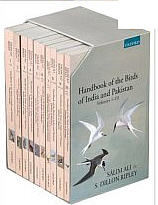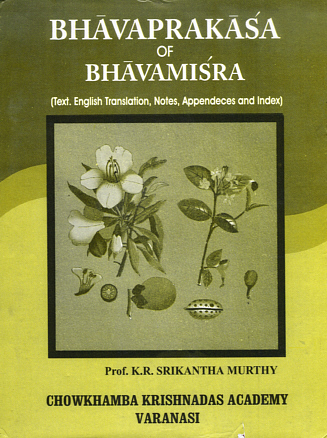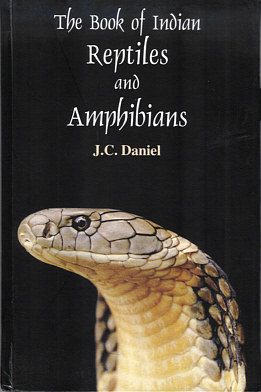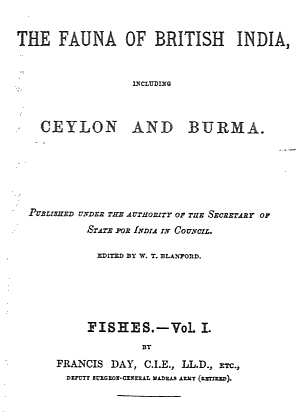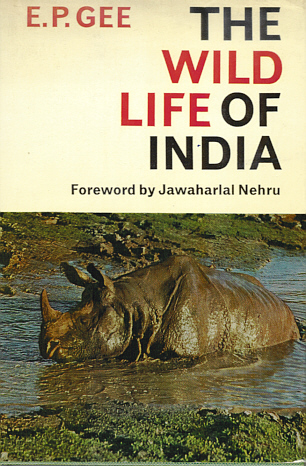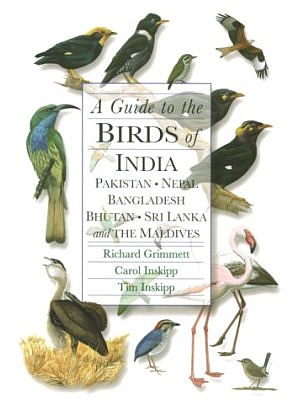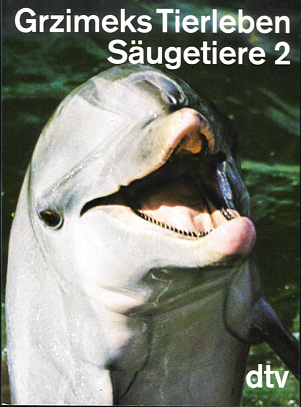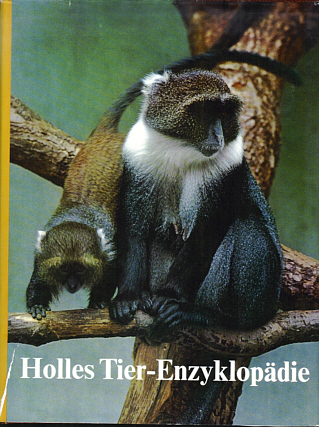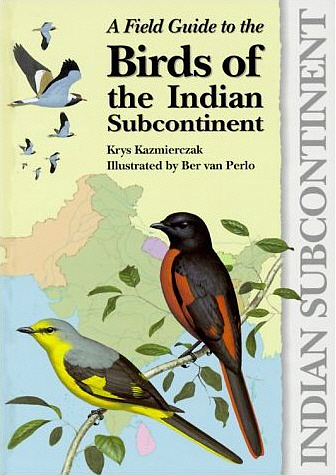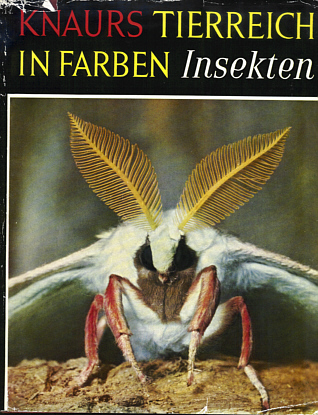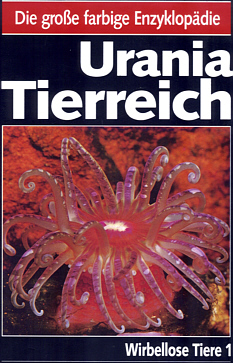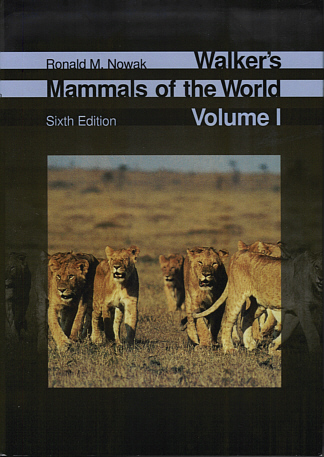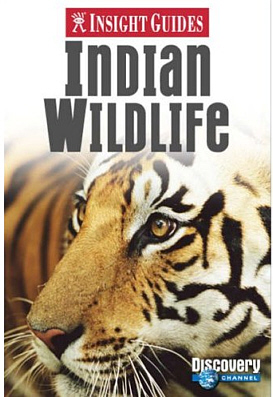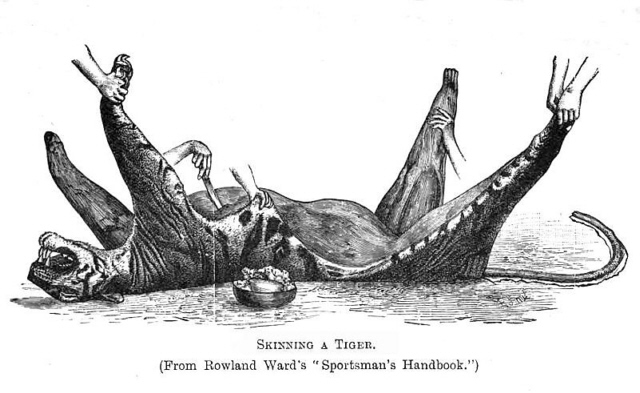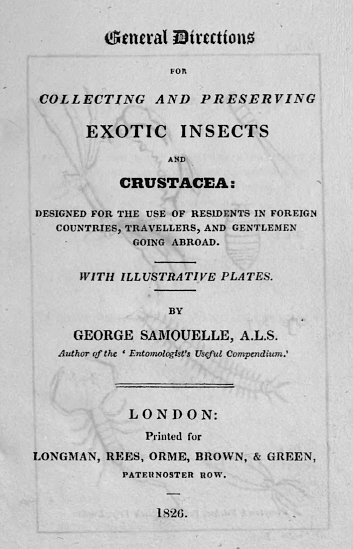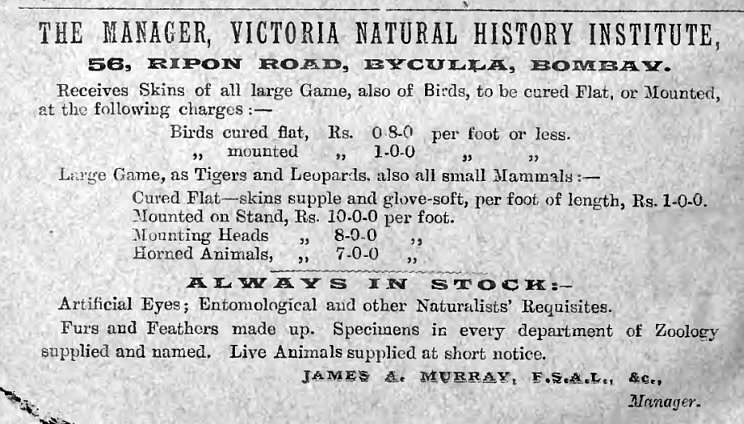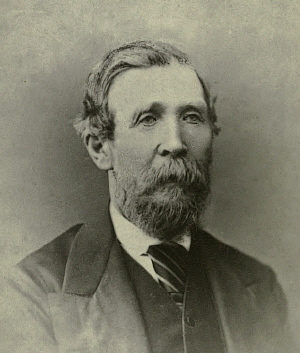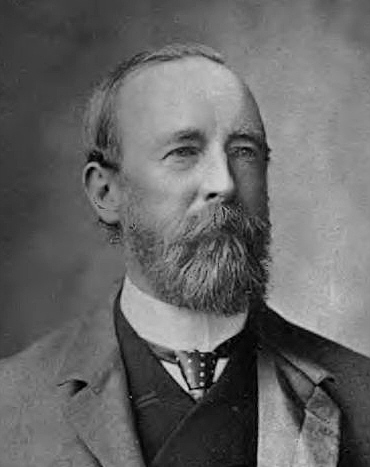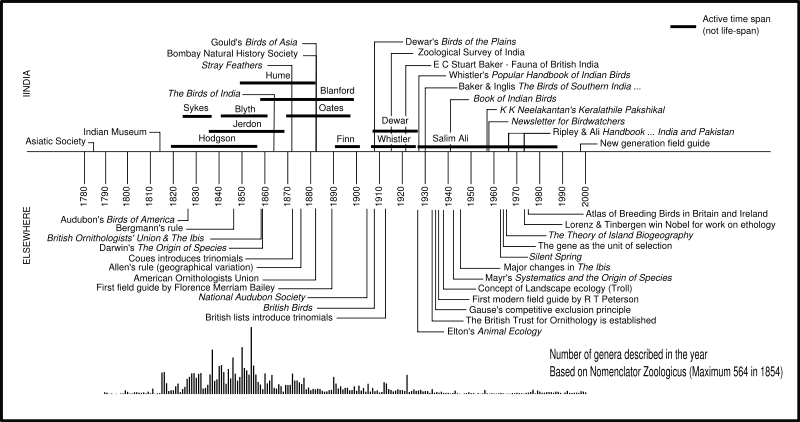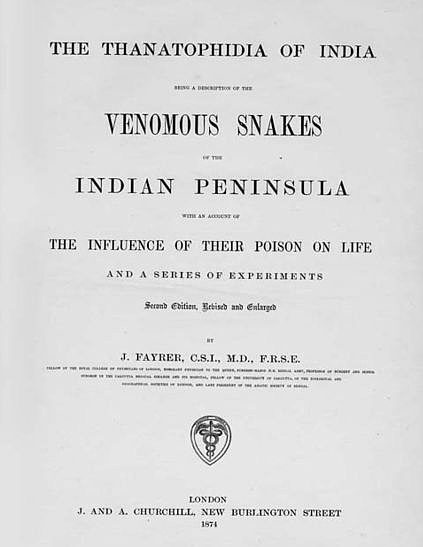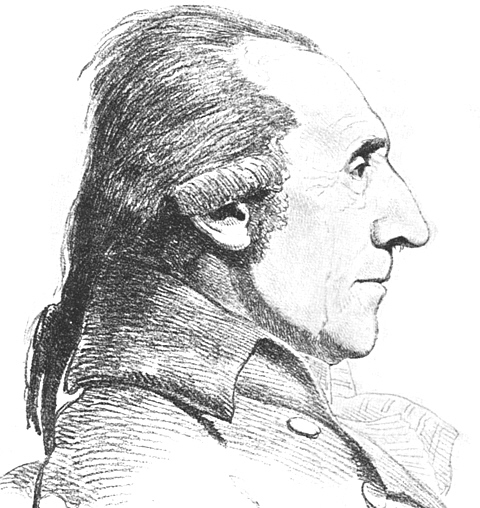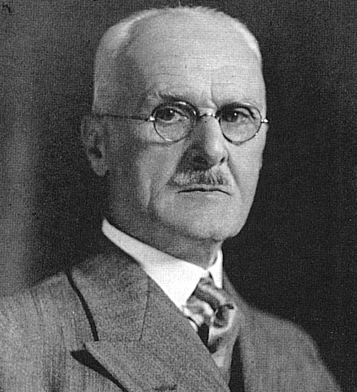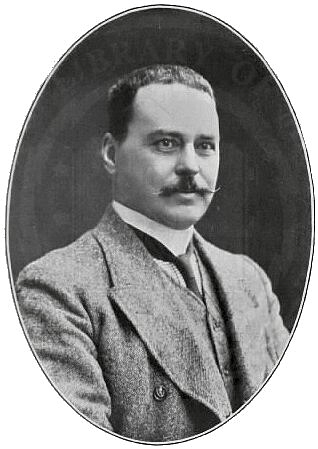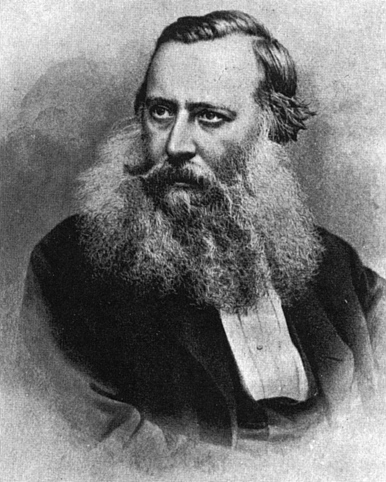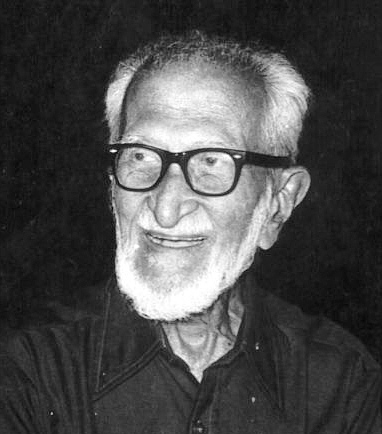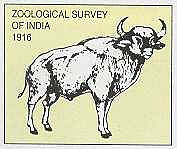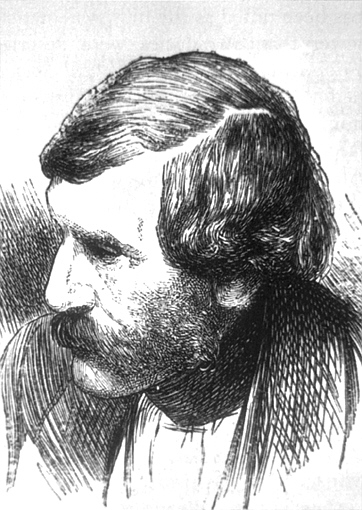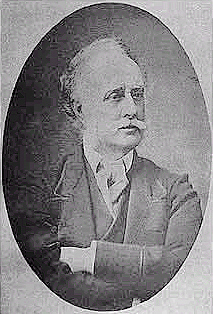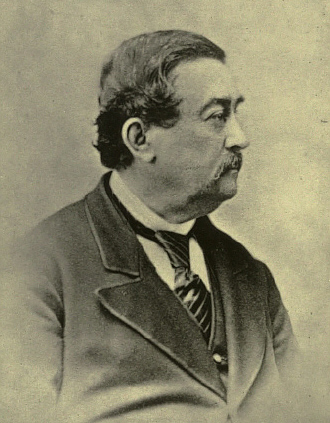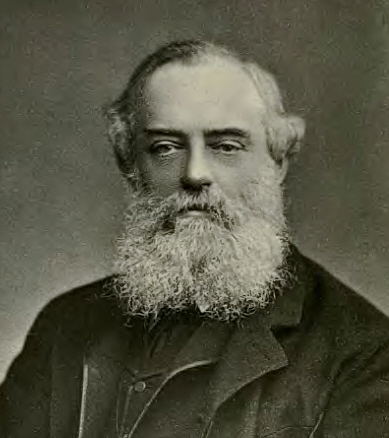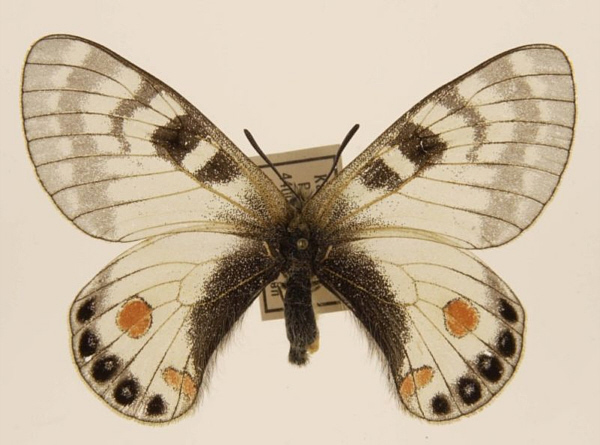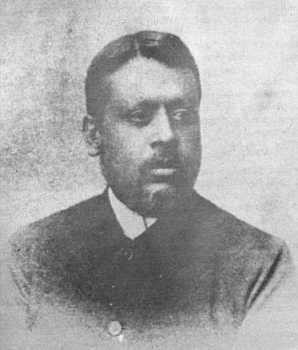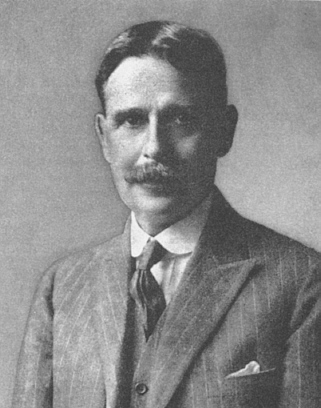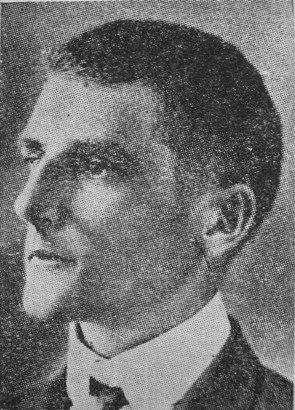| "Allan Octavian Hume (June
6, 1829 -
July 31,
1912) son of
Joseph Hume was a
civil servant in British governed India, and a political reformer. He
was, along with Sir William Wedderburn, a founder of the
Indian National Congress. He has been called the father of Indian
Ornithology by some and, by those who found him dogmatic as the
Pope of Indian ornithology.[1] Life and career
Hume was born at St
Mary Cray, Kent,[2]
the son of
Joseph Hume, the Radical MP. He was educated at
Haileybury Training College and then
University College Hospital, studying medicine
and surgery.
In 1849 he sailed to India and the
following year joined the Bengal Civil Service at
Etawah (इतावाह) in
the North-Western Provinces, in what is now
Uttar Pradesh. He soon rose to become District Officer, introducing free
primary education and creating a local vernacular newspaper, Lokmitra
(The People's Friend). He married Mary Anne Grindall in 1853.[3]
He took up the cause of education and founded scholarships for higher
education. He wrote in 1859:[3]
a free and civilized government must look for its stability and
permanence to the enlightenment of the people and their moral and
intellectual capacity to appreciate its blessings.
In 1860 Hume was made
Companion of the Bath for his services during the rebellion or
Indian rebellion of 1857.
The system of departmental examinations introduced soon after (Hume
joined the civil services) enabled Hume so to outdistance his
seniors that when the Mutiny broke out he was officiating Collector
of Etawah, which lies between Agra and Cawnpur. Rebel troops were
constantly passing through the district, and for a time it was
necessary to abandon headquarters ; but both before and after the
removal of the women and children to Agra, Hume acted with vigour
and judgment. The steadfast loyalty of many native officials and
landowners, and the people generally, was largely due to his
influence, and enabled him to raise a local brigade of horse. In a
daring attack on a body of rebels at Jaswantnagar he carried away
the wounded joint magistrate, Mr. Clearmont Daniel, under a heavy
fire, and many months later he engaged in a desperate action against
Firoz Shah and his Oudh freebooters at Hurchandpur. Company rule had
come to an end before the ravines of the Jumna and the Chambul in
the district had been cleared of fugitive rebels. Hume richly
merited the C.B. (Civil division) awarded him in 1860. He remained
in charge of the district for ten years or so and did good work.
—Obituary The Times of August 1st, 1912
In 1863 he moved for separate schools for Juvenile delinquents rathern
than imprisonment. His efforts led to a Juvenile Reformatory not far from Etawah
(इतावाह). He
also started free schools in Etawah and by 1857 he established 181 schools
with 5186 students including two girls. In 1867 he became Commissioner of
Customs for the North West Province, and in 1870 he became attached to the
central government as Director-General of Agriculture. In 1879 he returned
to provincial government at Allahabad.[3]
Hume's appointment, in 1867, to be Commissioner of Customs in Upper
India gave him charge of the huge physical barrier[4]which
stretched across the country for 2,500 miles from Attock, on the
Indus, to the confines of the Madras Presidency. He carried out the
first negotiations with Rajputana Chiefs, leading to the abolition
of this barrier, and Lord Mayo rewarded him with the Secretaryship
to Government in the Home, and afterwards, from 1871, in the Revenue
and Agricultural Departments. Leaving Simla, he returned to the
North-West Provinces in October, 1879, as a member of the Board of
Revenue, and retired from the service in 1882.[5]
He was against the revenue earned through liquor traffic and described it
as "The wages of sin". With his progressive ideas about social reform, he
advocated women's education, was against infanticide and enforced widowhood.
Hume laid out in Etawah a neatly gridded commercial district that is now
known as Humeganj but often pronounced Homeganj. The high school that
he helped build with his own money is still in operation, now as a junior
college, and it has a floor plan resembling the letter H. This, according to
some is an indication of Hume's imperial ego, although the form can easily
be missed.
Hume proposed to develop fuelwood plantations "in every village in the
drier portions of the country" and thereby provide a substitute heating and
cooking fuel so that manure could be returned to the land. Such plantations,
he wrote, were "a thing that is entirely in accord with the traditions of
the country-a thing that the people would understand, appreciate, and, with
a little judicious pressure, cooperate in."
He also took note of rural indebtedness, chiefly caused by the use of
land as security, a practice the British themselves had introduced. Hume
denounced it as another of "the cruel blunders into which our narrow-minded,
though wholly benevolent, desire to reproduce England in India has led us."
Hume also wanted government-run banks, at least until cooperative banks
could be established.[3]
He was very outspoken and never feared to criticise when he thought the
Government was in the wrong. In 1861, he objected to the concentration of
police and judicial functions in the hands of the police superintendent. He
criticized the administration of
Lord Lytton (before 1879) which according to him cared little for the
welfare and aspiration of the people of India. Lord Lytton's foreign policy
according to him had led to the waste of "millions and millions of Indian
money".[3]
In 1879 the Government made their disapproval of his criticism and
frankness known and summarily removed him from the Secretariat. The
Englishman in an article dated 27 June 1879,
commenting on the event stated, "There is no security or safety now for
officers in Government employment."
Hume retired from the civil service in 1882. In 1883 he wrote an open
letter to the graduates of
Calcutta University, calling upon them to form their own national
political movement. This led in 1885 to the first session of the
Indian National Congress held in Bombay.
Hume served as its General Secretary until 1908. Along with Sir William
Wedderburn (1838-1918) they made it possible for Indians to organize
themselves in preparation of self government.
Mary Anne Grindall died in 1890, and their only daughter was the widow of
Mr. Ross Scott who was sometime Judicial Commissioner of Oudh (अवध). Hume left
India in 1894 and settled at The Chalet, 4, Kingswood Road,
Upper Norwood in
London. He
died at the age of eighty-three on July 31st, 1912. His ashes are buried in
Brookwood Cemetery.
In 1973, the Indian postal department released a commemorative stamp.[6]
TheosophyHume wanted to become a chela (student) of the Tibetan spiritual
gurus. During the few years of his connection with the
Theosophical Society Hume wrote three articles on Fragments of Occult
Truth under the pseudonym "H. X." published in The Theosophist.
These were written in response to questions from Mr. Terry, an Australian
Theosophist. He also privately printed several Theosophical pamphlets titled
Hints on Esoteric Theosophy. The later numbers of the Fragments, in
answer to the same enquirer, were written by
A.P. Sinnett and signed by him, as authorized by Mahatma K. H., A
Lay-Chela.
A long story, about Hume and his wife appears in A.P. Sinnett's book
Occult World, and the synopsis was published in a local paper of India.
The story relates how at a dinner party,
Madame Blavatsky asked Mrs Hume if there was anything she wanted. She
replied that there was a brooch, her mother had given her, that had gone out
of her possession some time ago. Blavatsky said she would try to recover it
through occult means. After some interlude, later that evening, the brooch
was found in a garden, where the party was directed by Blavatsky.
Madame Blavatsky was a regular visitor at Hume's Rothney castle at Simla and an
account of her visit may be found in Simla, Past and Present by
Edward John Buck (who succeeded Mr. Hume in charge of the Agricultural
Department). Later, Hume privately expressed grave doubts on certain powers
attributed to Madame Blavatsky and due to this, soon fell out of favour with
the Theosophists.
Hume lost all interest in theosophy when he got involved with the
creation of the Indian National Congress.
Contribution to ornithology
From early days, Hume had a special interest in science. Science, he
wrote
...teaches men to take an interest in things outside and beyond… The
gratification of the animal instinct and the sordid and selfish cares of
worldly advancement; it teaches a love of truth for its own sake and
leads to a purely disinterested exercise of intellectual faculties
and of natural history he wrote in 1867:[3]
... alike to young and old, the study of Natural History in all its
branches offers, next to religion, the most powerful safeguard against
those worldly temptations to which all ages are exposed. There is no
department of natural science the faithful study of which does not leave
us with juster and loftier views of the greatness, goodness, and wisdom
of the Creator, that does not leave us less selfish and less worldly,
less spiritually choked up with those devil’s thorns, the love of
dissipation, wealth, power, and place, that does not, in a word, leave
us wiser, better and more useful to our fellow-men.
During his career in Etawah, he built a personal collection of bird
specimens, however it was destroyed during the 1857 mutiny. Subsequently he
started afresh with a systematic plan to survey and document the birds of
the Indian Subcontinent and in the process he accumulated the largest
collection of Asiatic birds in the world, which he housed in a museum and
library at his home in Rothney Castle on Jakko Hill, Simla.
Rothney castle originally belonged to P. Mitchell, C.I.E and after Hume
bought it, he tried to convert the house into a veritable palace, which he
expected would be bought by the Government as a Viceregal residence in view
of the fact that the Governor-General then occupied Peterhoff, which
was too small for Viceregal entertainments. Hume spent over two hundred
thousand pounds on the grounds and buildings. He added enormous reception
rooms suitable for large dinner parties and balls, as well as a magnificent
conservatory and spacious hall with walls displaying his superb collection
of Indian horns. He hired a European gardener, and made the grounds and
conservatory a perpetual horticultural exhibition, to which he courteously
admitted all visitors.[3]
Rothney Castle could only be reached by a troublesome climb, and was
never purchased by the British Government and he himself did not use the
larger rooms except for one that he converted into a museum for his
wonderful collection of birds, and for occasional dances.[3]
He made many expeditions to collect birds both on health leaves and as
and where his work took him. He was Collector and Magistrate of Etawah from
1856 to 1867 during which time he studied the birds of that area. He later
became Commissioner of Inland Customs which made him responsible for the
control of 2500 miles of coast from near Peshawar in the northwest to
Cuttack on the Bay of Bengal. He travelled on horseback and camel in areas
of Rajasthan and negotiated treaties with various local maharajas to control
the export of natural resources such as salt. During these travels he made a
number of notes on various bird species:
The nests are placed indifferently on all kinds of trees (I have
notes of finding them on mango, plum, orange, tamarind, toon, etc.),
never at any great elevation from the ground, and usually in small trees,
be the kind chosen what it may. Sometimes a high hedgerow, such as our
great
Customs hedge, is chosen, and occasionally a solitary caper or
stunted acacia-bush.
– On the nesting of the Bay-backed
Shrike (Lanius vittatus) in The Nests and Eggs of Indian Birds.
His expedition to the Indus area was one of the largest and it started in
late November 1871 and continued until the end of February 1872. In March
1873, he visited the Andaman and Nicobar Islands in the Bay of Bengal. In
1875 he visited the Laccadive Islands. And in 1881 he made his last
ornithological expedition to Manipur. This was made on special leave
following his demotion from the Central Government to a junior position on
the Board of Revenue of the North Western Provinces.
He used this vast bird collection to produce a massive publication on all
the birds of India. Unfortunately this work was lost in 1885 when all Hume's
manuscripts were sold by a servant as waste paper. Hume's interest in
ornithology reduced due to this theft as well as a landslip caused by heavy
rains in Simla which damaged his personal museum and specimens. He wrote to
the
British Museum wishing to donate his collection on certain conditions.
One of the conditions was that the collection was to be examined by Dr.
R. Bowdler Sharpe and personally packed by him, apart from raising Dr.
Sharpe's rank and salary due to the additional burden on his work caused by
his collection. The British Museum was unable to heed to his conditions. It
was only after the destruction of nearly 20000 specimens, that alarm bells
were raised by Dr. Sharpe and the Museum authorities let him visit India to
supervise the transfer of the specimens to the British Museum.[3]
Sharpe provides the following account of Hume's impressive private
ornithological museum:[3]
I arrived at Rothney Castle about 10 am on the 19th of May, and was
warmly welcomed by Mr Hume, who lives in a most picturesque situation
high up on Jakko…From my bedroom window, I had a fine view of the snowy
range. Although somewhat tired by my jolt in the Tonga from Solun, I
gladly accompanied Mr. Hume at once into the museum…I had heard so much
from my friends, who knew the collection intimately,…that I was not so
much surprised when at last I stood in the celebrated museum and gazed
at the dozens upon dozens of tin cases which filled the room. Before the
landslip occurred, which carried away one end of the museum, It must
have been an admirably arranged building, quite three times as large as
our meeting-room at the Zoological Society, and…much more lofty.
Throughout this large room went three rows of table cases with glass
tops, in which were arranged a series of the birds of India sufficient
for the identification of each species, while underneath these table-
cases where enormous cabinets made of tin, with trays inside, containing
species of birds in the table cases above. All of the rooms were racks
reaching up to the ceiling, and containing immense cases full of birds…
On the western side of the museum was the library, reached by a descent
of three steps, a cheerful room, furnished with large tables, and
containing besides the egg-cabinets, a well-chosen set of
working-volumes. One ceases to wonder at the amount of work its owner
got through when the excellent plan of his museum is considered. In a
few minutes an immense series of specimens could be spread out on the
tables, while all the books were at hand for immediate reference…After
explaining to me the contents of the museum, we went below into the
basement, which consisted of eight great rooms, six of them full, from
floor to ceiling, of cases of birds, while at the back of the house two
large verandahs were piled high with cases full of large birds, such as
Pelicans, Cranes, Vultures, &c. An inspection of a great cabinet
containing a further series of about 5000 eggs completed our survey. Mr.
Hume gave me the keys of the museum, and I was free to commence my task
at once.
Sharpe also noted:[3]
Mr. Hume was a naturalist of no ordinary calibre, and this great
collection will remain a monument of his genius and energy of its
founder long after he who formed it has passed away...Such a private
collection as Mr. Hume's is not likely to be formed again; for it is
doubtful if such a combination of genius for organisation with energy
for the completion of so great a scheme, and the scientific knowledge
requisite for its proper development will again be combined in a single
individual.
The Hume collection as it went to the British museum in 1884 consisted of
82,000 specimens of which 75,577 were finally placed in the Museum. A
break-up of that collection is as follows (old names retained).[3]
- 2830 Birds of Prey (Accipitriformes)… 8 types
- 1155 Owls (Strigiformes)…9 types
- 2819 Crows, Jays, Orioles etc…5 types
- 4493 Cuckoo-shrikes and Flycatchers… 21 types
- 4670 Thrushes and Warblers…28 types
- 3100 Bulbuls and wrens, Dippers, etc…16 types
- 7304 Timaliine birds…30 types
- 2119 Tits and Shrikes…9 types
- 1789 Sun-birds (Nectarinidae) and White-eyes (Zosteropidae)…8 types
- 3724 Swallows (Hirundiniidae), Wagtails and Pipits (Motacillidae)…8
types
- 2375 Finches (Fringillidae)…8 types
- 3766 Starlings (Sturnidae), Weaver-birds (Ploceidae), and larks (Alaudidae)…22
types
- 807 Ant-thrushes (Pittidae), Broadbills (Eurylaimidae)…4 types
- 1110 Hoopoes (Upupae), Swifts (Cypseli), Nightjars (Caprimulgidae)
and Frogmouths (Podargidae)…8 types
- 2277 Picidae, Hornbills (Bucerotes), Bee-eaters (Meropes),
Kingfishers (Halcyones), Rollers(Coracidae), Trogons (Trogones)…11 types
- 2339 Woodpeckers (Pici)…3 types
- 2417 Honey-guides (Indicatores), Barbets (Capiformes), and Cuckoos
(Coccyges)…8 types
- 813 Parrots (Psittaciformes)…3 types
- 1615 Pigeons (Columbiformes)…5 types
- 2120 Sand-grouse (Pterocletes), Game-birds and
Megapodes(Galliformes)…8 types
- 882 Rails (Ralliformes), Cranes (Gruiformes), Bustards (Otides)…6
types
- 1089 Ibises (Ibididae), Herons (Ardeidae), Pelicans and Cormorants
(Steganopodes), Grebes (Podicipediformes)…7 types
- 761 Geese and Ducks (Anseriformes)…2 types
- 15965 Eggs
The Hume Collection contained 258
types.
The egg collection was made up of carefully authenticated contributions
from knowledgeable contacts and on the authenticity and importance of the
collection, E. W. Oates wrote in the 1901 Catalogue of the collection of
birds' eggs in the British Museum (Volume 1):
The Hume Collection consists almost entirely of the eggs of Indian
birds. Mr. Hume seldom or never purchased a specimen, and the large
collection brought together by him in the course of many years was the
result of the willing co-operation of numerous friends resident in India
and Burma. Every specimen in the collection may be said to have been
properly authenticated by a competent naturalist; and the history of
most of the clutches has been carefully recorded in Mr. Hume's 'Nests
and Eggs of Indian Birds', of which two editions have been published.
Species described
Some of the species that were first described or discovered by Hume are
as follows. The numbers are references to species as given in S. D. Ripley's
synopsis[7]
and the old names are retained. Many of these names are no longer valid.[3]
- 12 Persian Shearwater (Procellaria lherminieri persica) (Puffinus
persicus)
- 17 Short-tailed Tropic-bird (Phaethon
aethereus indicus)
- 33 Great Whitebellied Heron (Ardea
insignis)
- 96 Grey, Andaman or Oceanic Teal (Anas
gibberifrons albogularis)
- 140 Burmese Shikra (Accipiter
badius poliopsis)
- 148 Indian Sparrow-hawk (Accipiter nisus melaschistos)
- 180,183 Indian Griffon Vulture (Gyps fulvus fulvescens)
- 181 Himalayan Griffon Vulture (Gyps
himalayensis)
- 200 Andaman Pale Serpent Eagle (Spilornis
cheela davisoni)
- 201 Nicobar Crested Serpent Eagle (Spilornis cheela minimus)
(=Spilornis
minimus)
- 235 Northern Chukor (Alectoris
chukar pallescens)
- 239 Assam Black Partridge (Francolinus francolinus
melanonotus)
- 263 Northern Painted Bush Quail (Perdicula
erythrorhyncha blewitti)
- 265 Manipur Bush Quail (Perdicula manipurensis manipurensis)
- 273 Redbreasted Hill Partridge (Arborophila
mandellii)
- 308 Mrs. Hume's Barredback Pheasant (Syrmaticus
humiae humiae)
- 330 Andaman Bluebreasted Banded Rail (Rallus striatus
obscurior)(=
Gallirallus striatus)
- 466 Roseate Tern (Sterna dougalli korustes)
- 476 Blackshafted Ternlet (Sterna saundersi) (=Sterna
albifrons)
- 516 Blue Rock Pigeon (Columba livia neglecta)
- 525 Andaman Wood Pigeon (Columba
palumboides)
- 555 Andaman Redcheeked Parakeet (Psittacula longicauda
tytleri)
- 563 Eastern Slatyheaded Parakeet (Psittacula finschii)
- 601 Bangladesh Crow-pheasant (Centropus sinensis intermedius)
- 607 Andaman Barn Owl (Tyto
alba deroepstorffi)
- 610 Ceylon Bay Owl (Phodilus
badius assimilis)
- 611 Western Spotted Scops Owl (Otus
spilocephalus huttoni)
- 613 Andaman Scops Owl (Otus
balli)
- 614 Pallid Scops Owl (Otus
brucei)
- 618b Nicobar Scops Owl (Otus scops nicobaricus) (=Otus
alius)
- 619 Punjab Collared Scops Owl (Otus
bakkamoena plumipes)
- 626a Himalayan Horned or Eagle Owl (Bubo bubo hemachalana)
- 643 Burmese Brown Hawk-owl (Ninox scutulata burmanica)
- 645 Hume's Brown Hawk-owl (Ninox scutulata obscura)
- 653 Forest Spotted Owlet (Athene blewitti) (=Heteroglaux
blewitti)
- 654
Hume's Owl (Strix
butleri)
- 669 Bourdillon's or Kerala Great Eared Nightjar (Eurostopodis
macrotis bourdilloni)
- 673 Hume's European Nightjar (Caprimulgus europaeus unwini)
- 679 Andaman Longtailed Nightjar (Caprimulgus macrurus
andamanicus)
- 684 Hume's Swiftlet (Collocalia brevirostris innominata)
- 684a Black-nest Swiftlet (Collocalia maxima maxima)
- 686 Andaman Greyrumped or White-nest Swiftlet (Collocalia
fuciphaga inexpectata)
- 691 Brown-throated Spinetail Swift (Chaetura gigantea indica)
- 732 Nicobar Storkbilled Kingfisher ([Pelargopsis
capensis|Pelargopsis capensis intermedia]])
- 738 Andaman Whitebreasted Kingfisher (Halcyon
smyrnensis saturatior)
- 773
Narcondam Hornbill (Rhyticeros undulatus narcondami)
- 793 Pakistan Orangerumped Honeyguide (Indicator
xanthonotus radcliffi)
- 841 Manipur Crimsonbreasted Pied Woodpecker (Picoides
cathpharius pyrrhothorax)
- 887 Karakoram or Hume's Short-toed Lark (Calandrella
acutirostris acutirostris)
- 889 Indus Sand Lark (Calandrella raytal adamsi)
- 898 Baluchistan Crested Lark (Galerida
cristata magna)
- 915 Pale Crag Martin (Hirundo obsoleta pallida)
- 974 Large Andaman Drongo (Dicrurus andamanensis dicruriformis)
- 986 Andaman Glossy Stare (Aplonis panayensis tytleri)
- 998 Hume's or Afghan Starling (Sturnus vulgaris nobilior)
- 1000 Sind Starling (Sturnus vulgaris minor)
- 1041 Hume's Ground Chough (Podoces humilis)
- 1113 Andaman Blackheaded Bulbul (Pycnonotus atriceps
fuscoflavescens)
- 1165 Mishmi Brown Babbler (Pellorneum albiventre ignotum)
- 1172 Mount Abu Scimitar Babbler (Pomatorhinus schisticeps
obscurus)
- 1190 Manipur Longbilled Scimitar Babbler (Pomatorhinus
ochraceiceps austeni)
- 1225 Kerala Blackheaded Babbler (Rhopocichla atriceps
bourdilloni)
- 1234 Hume's Babbler (Chrysomma altirostre griseogularis)
- 1289 Western Variegated Laughing Thrush (Garrulax variegatus
similis)
- 1301 Khasi Hills Greysided Laughing Thrush (Garrulax
caerulatus subcaerulatus)
- 1330 Manipur Redheaded Laughing Thrush (Garrulax
erythrocephalus erythrolaema)
- 1363 Sikkim Whitebrowed Yuhina (Yuhina castaniceps rufigenis)
- 1389 Bombay Quaker Babbler (Alcippe
poioicephala brucei)
- 1424 Eastern Slaty Blue Flycatcher (Muscicapa leucomelanura
minuta)
- 1434 Whitetailed Blue Flycatcher (Muscicapa concreta cyanea)
- 1453 Eastern Whitebrowed Fantail Flycatcher (Rhipidura
aureola burmanica)
- 1484 Hume's Bush Warbler (Cettia acanthizoides brunnescens)
- 1510 Northwestern Plain Wren-Warbler (Prinia subflava
terricolor)
- 1520 Northwestern Jungle Wren-Warbler (Prinia sylvatica
insignia)
- 1526 Sind Brown Hill Warbler (Prinia criniger striatula)
- 1540 Blacknecked Tailor Bird (Orthotomus atrogularis nitidus)
- 1569 Small Whitethroat (Sylvia curruca minula)
- 1570 Hume's Lesser Whitethroat (Sylvia curruca althaea)
- 1577 Plain Leaf Warbler (Phylloscopus neglectus)
- 1664 Andaman Magpie-Robin (Copsychus saularis andamanensis)
- 1707 Redtailed Chat (Oenanthe xanthoprymna kingi)
- 1714 Hume's Chat (Oenanthe alboniger)
- 1730 Burmese Whistling Thrush (Myiophonus caeruleus eugenei)
- 1820 Manipur Redheaded Tit (Aegithalos concinnus manipurensis)
- 1850 Manipur Tree Creeper (Certhia manipurensis)
- 1903 Andaman Flowerpecker (Dicaeum concolor virescens)
- 1913 Andaman Olivebacked Sunbird (Nectarinia jugularis
andamanica)
- 1918 Assam Purple Sunbird (Nectarinia asiatica intermedia)
- 1129a Nicobar Yellowbacked Sunbird (Aethopyga siparaja
nicobarica)
- 1955 Blanford's Snow Finch (Montifringilla blanfordi
blanfordi)
- 1960 Finn's Baya (Ploceus megarhynchus megarhynchus)
- 1970 Nicobar Whitebacked Munia (Lonchura striata semistriata)
- 1971-2 Jerdon's Rufousbellied Munia (Lonchura kelaarti
jerdoni)
- 1993 Tibetan Siskin (Carduelis thibetana)
- 1995 Stoliczka's Twite (Acanthis flavirostris montanella)
An additional species, the Large-billed Reed-Warbler
Acrocephalus orinus was known from just one specimen collected by
him in 1869.[8]
The status of the species was contested for long and DNA comparisons with
similar species in 2002 suggested that it was a valid species.[9]
It was only in 2006 that the species was seen again in Thailand.
Hume made several expeditions solely to study ornithology and in March
1873 he made one to the Andaman, Nicobar and other islands in the Bay of
Bengal along with geologists Dr.
Ferdinand Stoliczka and Dr. Dougall of the Geological Survey of India
and
James Wood-Mason of the Indian Museum in Calcutta.[3]
Hume employed
William Ruxton Davison as a curator of his personal bird collection and
also sent him out on collection trips to various parts of India, when he was
held up with official responsibilities.[3]
Stray Feathers
Hume started the quarterly journal Stray Feathers - A journal of
ornithology for India and dependencies in 1872. He used the journal to
publish descriptions of his new discoveries, such as Hume's Owl, Hume's
Wheatear and Hume's Whitethroat. He wrote extensively on his own observation
as well as critical reviews of all the ornithological works of the time and
earned himself the nickname of Pope of Indian ornithology.
Hume's network of correspondents
Hume built up a network of ornithologists reporting from various parts of
India. A list based on the correspondents mentioned in Stray Feathers and in
his Game Birds is as follows. This is probably only a small fraction of the
subscribers of Stray Feathers. This huge network made it possible for Hume
to cover a much larger geographic region in his ornithological work.
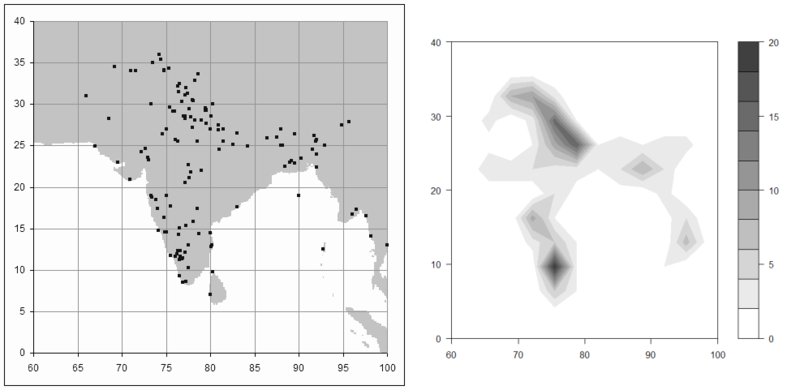
Distribution and density of Hume's correspondents across India
During the time of Hume, Blyth was considered the father of Indian
ornithology. Hume's achievement which made use of a large network of
correspondents was recognized even during his time:
Mr. Blyth, who is rightly called the Father of Indian Ornithology,
"was by far the most important contributor to our knowledge of the
Birds of India." Seated, as the head of the Asiatic Society's
Museum, he, by intercourse and through correspondents, not only
formed a large collection for the Society, but also enriched the
pages of the Society's Journal with the results of his study, and
thus did more for the extension of the study of the Avifauna of
India than all previous writers. There can be no work on Indian
Ornithology without reference to his voluminous contributions. The
most recent authority, however, is Mr. Allen O. Hume, C.B., who,
like Blyth and Jerdon, got around him numerous workers, and did so
much for Ornithology, that without his Journal Stray Feathers,
no accurate knowledge could be gained of the distribution of Indian
birds. His large museum, so liberally made over to the nation, is
ample evidence of his zeal and the purpose to which he worked. Ever
saddled with his official work, he yet found time for carrying out a
most noble object. His Nests and Eggs, Scrap Book and
numerous articles on birds of various parts of India, the Andamans
and the Malay Peninsula, are standing monuments of his fame
throughout the length and breadth of the civilized world. His
writings and the field notes of his curator, contributors and
collectors are the pith of every book on Indian Birds, and his vast
collection is the ground upon which all Indian Naturalists must work.
Though differing from him on some points, yet the palm is his as an
authority above the rest in regard to the Ornis of India. Amongst
the hundred and one contributors to the Science in the pages of
Stray Feathers, there are some who may be ranked as specialists
in this department, and their labors need a record. These are Mr. W.
T. Blanford, late of the Geological Survey, an ever watchful and
zealous Naturalist of some eminence. Mr. Theobald, also of the
Geological Survey, Mr. Ball of the same Department, and Mr. W. E.
Brooks. All these worked in Northern India, while for work in the
Western portion must stand the names of Major Butler, of the 66th
Regiment, Mr. W. F. Sinclair, Collector of Colaba, Mr. G. Vidal, the
Collector of Bombay, Mr. J. Davidson, Collector of Khandeish, and
Mr. Fairbank, each one having respectively worked the Avifauna of
Sind, the Concan, the Deccan and Khandeish.
Many of Hume's correspondents were eminent naturalists and sportsmen of
the time.
-
Leith Adams, Kashmir
- Lieut.
H. E. Barnes, Afghanistan, Chaman, Rajpootana
- Captain
R. C. Beavan, Maunbhoom District, Shimla, Mount Tongloo (1862)
- Colonel
John Biddulph, Gilgit
- Major
C. T. Bingham, Thoungyeen Valley, Burma, Tenasserim, Moulmein,
Allahabad
- Mr.
W. Blanford
- Mr.
Edward Blyth
- Mr.
W. Edwin Brooks
- Sir Edward Charles Buck, Gowra, Hatu, near Narkanda (in Himachal
Pradesh), Narkanda, (about 30 miles north of Shimla)
- Captain Boughey Burgess, Ahmednagar (?-1855)[11]
- Captain and then Colonel
E. A. Butler, Belgaum (1880), Karachi, Deesa, Abu
- Mr.
James Davidson, Satara and Sholapur districts,Khandeish,
Kondabhari Ghat
- Colonel
Godwin-Austen, Shillong, Umian valley, Assam
- Mr.
Brian Hodgson, Nepal
-
Duncan Charles Home, 'Hero of the Kashmir Gate' (Bulandshahr,
Aligarh)
- Dr.
T. C. Jerdon, Tellicherry
- Colonel
C. H. T. Marshall, Bhawulpoor, Murree
- Colonel
G. F. L. Marshall, Nainital, Bhim tal
- Mr.
James A. Murray, Karachi Museum
- Mr.
Eugene Oates, Thayetmo, Tounghoo, Pegu
- Captain
Robert George Wardlaw Ramsay, Afghanistan, Karenee hills
- Mr.
G. P. Sanderson (Chittagong)
- Dr.
Ferdinand Stoliczka
- Mr.
Robert Swinhoe, Hongkong
- Mr.
Charles Swinhoe, S. Afghanistan
- Colonel
Samuel Tickell
- Colonel Tytler, Dacca, 1852
- Mr.
Valentine Ball, Rajmahal hills, Subanrika (Subansiri)
-
Richard Lydekker
He also corresponded with ornithologists outside India including
R. Bowdler-Sharpe, the
Marquis of Tweeddale,
Pere David,
Dresser,
Benedykt Dybowski,
John Henry Gurney, J.H.Gurney, Jr. ,Johann
Friedrich Naumann,
Severtzov, Dr.
Middendorff.
My Scrap book: or rough notes on Indian Oology and
ornithology (1869)This was Hume's first major work. It had 422 pages and accounts of 81
species. It was dedicated to
Edward Blyth and Dr.
Thomas C. Jerdon who had done more for Indian Ornithology than all
other modern observers put together and he described himself as their
their friend and pupil. He hoped that his book would form a nucleus
round which future observation may crystallize and that others around
the country could help him fill in many of the woeful blanks remaining in
record.
Game Birds of India, Burmah and Ceylon (1879-1881)
This work was co-authored by
C. H. T. Marshall. The three volume work on the game birds was made
using contributions and notes from a network of 200 or more correspondents.
Hume delegated the task of getting the plates made to Marshall. The
chromolithographs of the birds were drawn by W. Foster, E. Neale, M.
Herbert, Stanley Wilson and others and the plates were produced by F. Waller
in London. Hume had sent specific notes on colours of soft parts and
instructions to the artists. He was unsatisfied with many of the plates and
included additional notes on the plates in the book.
In the preface Hume wrote
In the second place, we have had great disappointment in artists.
Some have proved careless, some have subordinated accuracy of
delineation to pictorial effect, and though we have, at some loss,
rejected many, we have yet been compelled to retain some plates which
are far from satisfactory to us.
while his co-author Marshall, wrote
I have performed my portion of the work to the very best of my
abilities, and yet personally felt almost as if I were sailing under
false colors in appearing before the world as one of the authors of this
book; but I allow my name to appear as such, partly because Mr. Hume
strongly wishes it, partly because I do believe that as Mr. Hume says
this work, which has been for years called for, would never have
appeared had I not proceeded to England, and arranged for the
preparation of the plates, and partly because with the explanation thus
afforded no one can justly misconstrue my action.
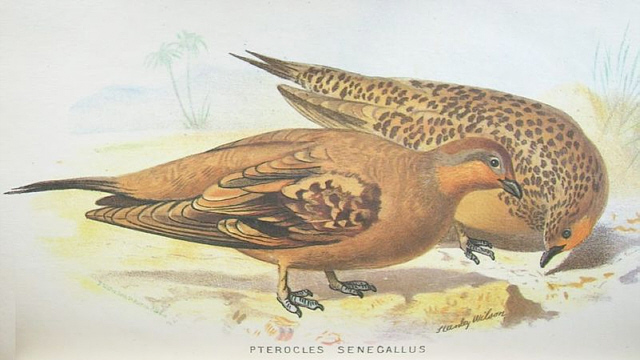
Hume's comment on the illustration The plate is a cruel
caricature of the species, just sufficiently like to permit of
identification, but miscolored to a degree only explicable on
the hypothesis of somebody's colour-blindness… Fortunately for
our supporters, this is the very worst plate in the three
volumes.
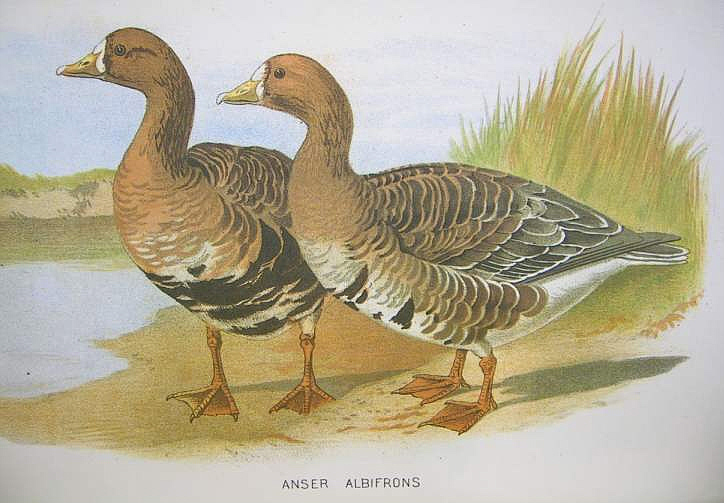
White-fronted Goose One of the illustrations that Hume
considered as exceptionally good.
Nests and Eggs of Indian Birds (1883)
This was another major work by Hume and in it he covered descriptions of
the nests, eggs and the breeding seasons of most Indian bird species. It
makes use of notes from contributors to his journals as well as other
correspondents and works of the time.
A second edition of this book was made in 1889 which was edited by
Eugene Oates. This was published when he had himself given up all
interest in ornithology. An event precipitated by the loss of his
manuscripts through the actions of a servant. He wrote in the preface:
I have long regretted my inability to issue a revised edition of
'Nests and Eggs'. For many years after the first Rough Draft
appeared, I went on laboriously accumulating materials for a
re-issue, but subsequently circumstances prevented my undertaking
the work. Now, fortunately, my friend Mr. Eugene Oates has taken the
matter up, and much as I may personally regret having to hand over
to another a task, the performance of which I should so much have
enjoyed, it is some consolation to feel that the readers, at any
rate, of this work will have no cause for regret, but rather of
rejoicing that the work has passed into younger and stronger hands.
One thing seems necessary to explain. The present Edition does not
include quite all the materials I had accumulated for this work.
Many years ago, during my absence from Simla, a servant broke into
my museum and stole thence several cwts. of manuscript, which he
sold as waste paper. This manuscript included more or less complete
life-histories of some 700 species of birds, and also a certain
number of detailed accounts of nidification. All small notes on
slips of paper were left, but almost every article written on
full-sized foolscap sheets was abstracted. It was not for many
months that the theft was discovered, and then very little of the
MSS. could be recovered.
—Rothney Castle, Simla, October 19th, 1889
Eugene Oates wrote his own editorial note
Mr. Hume has sufficiently explained the circumstances under which
this edition of his popular work has been brought about. I have
merely to add that, as I was engaged on a work on the Birds of India,
I thought it would be easier for me than for anyone else to assist
Mr. Hume. I was also in England, and knew that my labour would be
very much lightened by passing the work through the press in this
country. Another reason, perhaps the most important, was the fear
that, as Mr. Hume had given up entirely and absolutely the study of
birds, the valuable material he had taken such pains to accumulate
for this edition might be irretrievably lost or further injured by
lapse of time unless early steps were taken to utilize it.
This nearly marked the end of Hume's interest in ornithology. Hume's last
piece of ornithological writing was done in 1891 as part of an
Introduction to the Scientific Results of the Second Yarkand Mission an
official publication on the contributions of Dr. Ferdinand Stoliczka, who
died during the return journey on this mission. Stoliczka in a dying request
had asked that Hume should edit the volume on the ornithological results.
Indian National Congress
After retiring from the civil services and towards the end of Lord
Lytton's rule, Hume sensed that the people of India had got a sense of
hopelessness and wanted to do something, "a sudden violent outbreak of
sporadic crime, murders of obnoxious persons, robbery of bankers and looting
of bazaars, acts really of lawlessness which by a due coalescence of forces
might any day develop into a National Revolt." There were agrarian riots in
the Deccan and Bombay and Hume decided that an Indian Union would be a good
safety valve and outlet for this unrest. On the 1st of March 1883 he wrote a
letter to the graduates of Calcutta University:[12]
If only fifty men, good and true, can be found to join as founders,
the thing can be established and the further development will be
comparatively easy. ...
And if even the leaders of thought are all either such poor creatures,
or so selfishly wedded to personal concerns that they dare not strike a
blow for their country's sake, then justly and rightly are they kept
down and trampled on, for they deserve nothing better. Every nation
secures precisely as good a Government as it merits. If you the picked
men, the most highly educated of the nation, cannot, scorning personal
ease and selfish objects, make a resolute struggle to secure greater
freedom for yourselves and your country, a more impartial administration,
a larger share in the management of your own affairs, then we, your
friends, are wrong and our adversaries right, then are Lord Ripon's
noble aspirations for your good fruitless and visionary, then, at
present at any rate all hopes of progress are at an end and India truly
neither desires nor deserves any better Government than she enjoys. Only,
if this -be so, let us hear no more factious, peevish complaints that
you are kept in leading strings and treated like children, for you will
have proved yourself such. Men know how to act. Let there be no
more complaining of Englishmen being preferred to you in all important
offices, for if you lack that public spirit, that highest form of
altruistic devotion that leads men to subordinate private ease to the
public, weal that patriotism that has made Englishmen what they are,-
then rightly are these preferred to you, rightly and inevitably have
they become your rulers. And rulers and task-masters they must continue,
let the yoke gall your shoulders never so sorely, until you realise and
stand prepared to act upon the eternal truth that self-sacrifice and
unselfishness are the only unfailing guides to freedom and happiness.
The idea of the Indian Union took shape and Hume also had support from
Lord Dufferin for this although the latter wished to keep a low profile in
the matter. It has been suggested that the idea was originally conceived in
a private meeting of seventeen men after a Theosophical Convention held at
Madras in December 1884. Hume took the initiative, and it was in March 1885,
when the first notice was issued convening the first Indian National Union
to meet at Poona the following December.[12]
South London Botanical Institute
Shortly after Hume's return to London he took up an interest in botany, and
founded and endowed the
South London Botanical Institute which continues to promote the study of
plants to the present day. It was intended as a sort of local alternative to
Kew. The SLBI has a herbarium containing approximately 100,000 specimens
mostly of flowering plants from the British Isles and Europe including many
collected by Hume. The collection was later augmented by the addition of
other herbaria over the years, and has significant collections of Rubus
(bramble) species and of the Shetland flora, the latter including a major
gift from the late Richard Palmer, joint author of the standard work on
Shetland plants. Other resources include a very good library originally
containing Hume's own books. The institute today has classroom facilities, a
small botanical garden, and an ongoing programme of talks and courses. In
the years leading up to the establishment of the Institute, Hume built up
links with many of the leading botanists of his day. He worked with F. H.
Davey and in the Flora of Cornwall (1909), Davey thanks Hume as his
companion on excursions in Cornwall and Devon, and for helping in the
compilation of that Flora, publication of which was financed by him.
References
-
^ Ali, S. (1979) Bird study in India:Its history and its
importance. Azad Memorial lecture for 1978. Indian Council for
Cultural Relations. New Delhi.
-
^ According to the Dictionary of National Biography however
Encyclopaedia Britannica
[1] gives his birthplace as Montrose, Forfarshire
- ^
a
b
c
d
e
f
g
h
i
j
k
l
m
n
o Moulton, Edward (2003) 'The
Contributions of Allan O. Hume to the Scientific Advancement of
Indian Ornithology' in Petronia: Fifty Years of Post-Independence
Ornithology in India, ed. J. C. Daniel and G. W. Ugra.
Bombay Natural History Society - New Delhi: Oxford University
Press, New Delhi. Pages 295-317.
-
^ Footnote in Lydekker, 1913: This was a thorn-hedge
supplemented by walls and ditches, and strongly patrolled for
preventing the introduction into British territory of untaxed salt
from native states(see Sir
John Strachey's "India," London, 1888).
-
^ Lydekker, R. (1913) Catalogue of the Heads and Horns of
Indian Big Game bequeathed by A. O. Hume, C. B., to the British
Museum.
Scanned version
-
^
Stamp commemorating Hume - Indian Postal Department
-
^ S. Dillon Ripley (1961) A Synopsis of the Birds of India
and Pakistan. Bombay Natural History Society.
-
^ Hume, A. 1869. Ibis 2 (5): 355–357 (no title).
-
^ Bensch, S and D. Pearson (2002) The Large-billed Reed
Warbler Acrocephalus orinus revisited. Ibis (2002), 144:259–267
PDF
Nucleotide sequence
-
^ Murray, James A. 1888. The avifauna of British India and
its dependencies. Truebner. Volume 1.
-
^ Warr, F. E. 1996. Manuscripts and Drawings in the
ornithology and Rothschild libraries of The Natural History Museum
at Tring. BOC.
- ^
a
b Sitaramayya, B. Pattabhi. 1935. The
History of the Indian National Congress. Working Committee of the
Congress.
Scanned version
Further reading
- Bruce, Duncan A. (2000) The Scottish 100: Portraits of History's
Most Influential Scots, Carroll & Graf Publishers.
- Buck, E. J. (1904) Simla, Past and Present. Thacker & Spink,
Calcutta, 1904.
excerpt
- Mearns and Mearns (1988) Biographies for Birdwatchers.
Academic Press.
ISBN 0-12-487422-3
- Moxham, Roy (2002) The Great Hedge of India.
ISBN 0-7567-8755-6
- Wedderburn, W. 1913. Allan Octavian Hume. C.B. Father of the Indian
National Congress. T.F. Unwin. London.
External links
[Quelle:
http://en.wikipedia.org/wiki/Allan_Octavian_Hume. -- Zugriff am
2007-09-05] |

